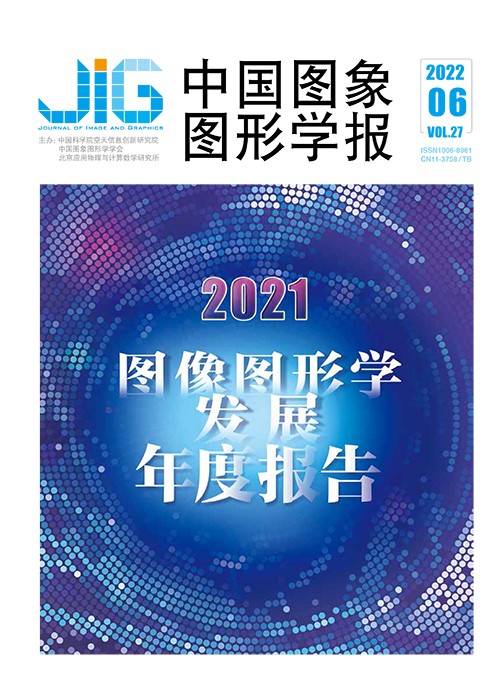
表格识别技术研究进展
高良才1, 李一博1, 都林2, 张新鹏1, 朱子仪1, 卢宁2, 金连文3, 黄永帅2, 汤帜1(1.北京大学王选计算机研究所, 北京 100871;2.华为技术有限公司 AI 应用研究中心, 北京 100085;3.华南理工大学电子与信息学院, 广州 510640) 摘 要
表格广泛存在于科技文献、财务报表、报纸杂志等各类文档中,用于紧凑地存储和展现数据,蕴含着大量有用信息。表格识别是表格信息再利用的基础,具有重要的应用价值,也一直是模式识别领域的研究热点之一。随着深度学习的发展,针对表格识别的新研究和新方法纷纷涌现。然而,由于表格应用场景广泛、样式众多、图像质量参差不齐等因素,表格识别领域仍然存在着大量问题亟需解决。为了更好地总结前人工作,为后续研究提供支持,本文围绕表格区域检测、结构识别和内容识别等3个表格识别子任务,从传统方法、深度学习方法等方面,综述该领域国内外的发展历史和最新进展。梳理了表格识别相关数据集及评测标准,并基于主流数据集和标准,分别对表格区域检测、结构识别、表格信息抽取的典型方法进行了性能比较。然后,对比分析了国内相对于国外,在表格识别方面的研究进展与水平。最后,结合表格识别领域目前面临的主要困难与挑战,对未来的研究趋势和技术发展目标进行了展望。
关键词
A survey on table recognition technology
Gao Liangcai1, Li Yibo1, Du Lin2, Zhang Xinpeng1, Zhu Ziyi1, Lu Ning2, Jin Lianwen3, Huang Yongshuai2, Tang Zhi1(1.Wangxuan Computer Institute, Peking University, Beijing 100871, China;2.Huawei AI Application Research Center, Huawei Technology Co., Ltd., Beijing 100085, China;3.School of Electronics and Information Engineering, South China University of Technology, Guangzhou 510640, China) Abstract
Optimal data access and massive data derived information extraction has become an essential technology nowadays. Table-related paradigm is a kind of efficient structure for the clustered data designation, display and analysis. It has been widely used on Internet and vertical fields due to its simplicity and intuitiveness. Computer based tables, pictures or portable document format(PDF) files as the carrier will cause structural information loss. It is challenged to trace the original tables back. Inefficient manual based input has more errors. Therefore, two decadal researches have focused on the computer automatic recognition of tables issues originated from documents or PDF files and multiple tasks loop. To obtain the table structure and content and extract specific information, table recognition aims to detect the table via the image or PDF and other electronic files automatically. It is composed of three tasks recognition types like table area detection, table structure recognition and table content recognition. There are two types of existed table recognition methods in common. One is based on optical character recognition (OCR) technology to recognize the characters in the table directly, and then analyze and identify the position of the characters. The other one is to obtain the key intersections and the positions of each frameline of the table through digital image processing to analyze the relationship between cells in the table. However, most of these methods are only applicable to a single field and have poor generalization ability. At the same time, it is constrained of some experience-based threshold design. Thanks to the development of deep learning technology, semantic segmentation algorithm, object detection algorithm, text sequence generation algorithm, pre training model and related technologies facilitates technical problem solving for table recognition. Most deep learning algorithms have carried out adaptive transformation according to the characteristics of tables, which can improve the effect of table recognition. It uses object detection algorithm for table detection task. Object detection and text sequence generation algorithms are mainly used for table structure recognition. Most pre training models have played a good effect on the aspect of table content recognition. But many table structure recognition algorithms still cannot handle these well for wireless tables and less line tables. On the aspects of table images of natural scenes, the relevant algorithms have challenged to achieve the annotation in practice due to the influence of brightness and inclination. A large number of datasets provide sufficient data support for the training of table recognition model and improve the effect of the model currently. However, there are some challenging issues between these datasets multiple annotation formats and different evaluation indicators. Some datasets provide the hyper text markup language(HTML) code of the structure only in the field of table structure recognition and some datasets provide the location of cells in the table and the corresponding row and column attributes. Some datasets are based on the position of cells or the content of cells in accordance with evaluation indicators. Some datasets are based on the adjacent relationship between cells or the editing distance between HTML codes for the recognition of table structure. Our research critically reviews the research situation of three sub tasks like table detection, structure recognition and content recognition and try to predict future research direction further.
Keywords
table area detection table structure recognition table content recognition deep learning table cell recognition table information extraction
|



 中国图象图形学报 │ 京ICP备05080539号-4 │ 本系统由
中国图象图形学报 │ 京ICP备05080539号-4 │ 本系统由